#Nepal Traditional Clothes
Explore tagged Tumblr posts
Text

Tamang woman, Nepal, by PhotoKhichuwa
#tamang#nepal#asia#south asia#folk clothing#traditional clothing#traditional fashion#cultural clothing
707 notes
·
View notes
Text

Newar Nepali Miku!
I saw Mikus from all over the world except Nepal so of course I had to draw her- Happy Birthday Miku!!
174 notes
·
View notes
Text

Travel poster for Kathmandu, Nepal, featuring an illustration of a woman opening her door to a view of a procession, with the Himalayas in the background (c. 1950).
#vintage poster#vintage travel poster#1950s#kathmandu#nepal#door#traditional clothing#traditional costume#himalayas#mountains#procession#travel#tourism#holiday
81 notes
·
View notes
Text

Katmandu, 2018
#picoftheday#travel#nepal#original photographers#photographers on tumblr#street portrait#cute girl#traditional clothes#streetphoto color#photooftheday#jewels
12 notes
·
View notes
Text
Kali - काली

Kali is a complex and powerful Hindu goddess known for her transformative, fierce, and protective qualities. She is often associated with destruction, time, death, and rebirth, but also with liberation and empowerment. Here’s a detailed look at Kali:
Origins and Background:
Name: Kali’s name comes from the Sanskrit word “Kala,” meaning time. She represents the inevitable nature of time, change, and transformation. In some interpretations, she is also linked to "black" or "dark," symbolizing the primordial void from which creation springs.
Origins: Kali is a form of the goddess Durga, who is often invoked for protection and strength. In Hindu mythology, she was born from Durga’s anger when the goddess needed an even more powerful force to defeat demons. Her energy (shakti) manifested as Kali, who easily destroyed the demonic forces threatening the world.
Region: Kali is venerated throughout India, especially in Bengal, Assam, and Kerala, as well as in Nepal. Her worship has spread globally due to her potent symbolism of power and liberation.
Iconography and Symbols:
Appearance: Kali is often depicted with dark skin (sometimes black or blue), wild hair, a fierce expression, and four arms. She typically holds a sword (symbolizing divine knowledge), a severed head (representing the ego), and a bowl (to catch blood, signifying life). She wears a necklace of skulls, a skirt of severed arms, and her tongue protrudes—often interpreted as her uncontainable nature.
Consort: Kali is often shown standing on the prostrate body of Shiva, her consort, symbolizing that even destruction (Kali) is subject to the higher cosmic order (Shiva). This represents the balance between creation and destruction.
Kali’s Attributes and Symbolism:
Destruction: Kali is often associated with the destruction of evil, ignorance, and ego. Her fierce form represents the dismantling of illusions and attachments, making space for transformation and rebirth.
Liberation (Moksha): Kali helps her devotees move beyond worldly illusions and ego-driven desires, leading to spiritual liberation. She helps destroy the barriers to self-realization, showing her aspect as a mother who can be both terrifying and nurturing.
Time and Death: Kali represents time (Kala), the unstoppable force that eventually brings about death and transformation. However, she is not death itself but the remover of the fear of death, showing that death is a part of the cosmic cycle.
How to Communicate and Work with Kali:
Approach with Respect: Kali’s energy is intense, so it’s essential to approach her with humility and sincerity. She is not a goddess to invoke lightly, as she may challenge you to confront deep truths about yourself and your life.
Offerings: Common offerings to Kali include red flowers (especially hibiscus), fruits, incense, and red clothing. Devotees also offer food, sweets, and liquor (such as rum) in some traditions.
Mantras and Prayers: One way to honor Kali is through mantras. A well-known mantra is “Om Krim Kalikayai Namah,” which invokes her protective and transformative energy. You can chant it during meditation or when seeking her guidance.
Meditation and Visualization: Meditate on Kali’s image, focusing on her fierce yet liberating nature. Visualize her cutting away the illusions or fears that hold you back. Though her energy is powerful, she ultimately provides protection and strength.
Days of Worship: In some traditions, Kali is worshiped on Saturdays or during the new moon (Amavasya), a time associated with endings and new beginnings. The most significant festival for Kali is Kali Puja, celebrated during the Hindu festival of Diwali, especially in Bengal.
Things to Consider When Working with Kali:
Transformation and Shadow Work: Kali often helps those who are ready to confront their own shadows—the parts of ourselves we hide or fear. Her energy can prompt deep introspection and release, which may be intense but is ultimately healing.
Facing Fear and Ego: If you work with Kali, you might find yourself in situations where you are forced to confront your fears or break down attachments to ego-driven desires. This can be uncomfortable, but it’s a path to personal growth and liberation.
Protection: Kali is a fierce protector of her devotees. If you are dealing with challenges, feeling vulnerable, or need courage, Kali’s energy can be invoked to help you stand strong and face adversity.
Destruction as Renewal: Kali’s destructive aspect is also about clearing away what no longer serves you. This could mean relationships, old patterns, or limiting beliefs. Working with her can bring about significant life changes.
How to Honor Kali:
Rituals: You can create a small altar to Kali, where you place her image or statue, alongside offerings. Light candles or oil lamps, and offer incense, reciting mantras or prayers.
Self-Reflection: Since Kali helps in breaking down the ego, engage in regular self-reflection. Journaling about your emotions, fears, and goals can be a powerful practice.
Facing Your Shadows: Work on facing your fears, and be open to Kali’s lessons about impermanence and transformation. Accepting difficult aspects of life (such as loss or failure) can be part of honoring her.
Serve Others: Since Kali is both a destroyer and nurturer, acts of service, especially toward those in need or suffering, can be a way of embodying her compassion.
Working with Kali Spiritually:
Caution with Intensity: Kali’s energy is transformative but intense. She can push you toward personal evolution quickly, sometimes in ways that may feel like you are being “torn down” to be rebuilt. It’s important to pace yourself, especially if you are new to working with her.
Respect the Process: Kali’s path is not one of instant gratification. The changes she brings may take time, and they might not be easy. Trust the process of transformation she initiates, even when it feels challenging.
Kali embodies both destruction and creation, fear and protection, chaos and balance. Her energy can be both deeply terrifying and incredibly liberating, and working with her offers the chance for profound personal and spiritual growth.
#kali#deities#dark goddess#underworld goddess#hinduism#hindu goddess#goddess#witchcraft#witch#witchy#witchblr
13 notes
·
View notes
Text
Nayshall's clothing (pt. 1)
I'm gonna be 100% honest with ya'll. I was writing a Bosch smut and for the life of me, I didn't know the names of the clothes he was wearing. But I didn't want to put "Robes" and move on, so I did a deep dive into Nayshall's clothes.
Nayshall is a blend of multiple cultures in one, but the general consensus of forums on Reddit and other forums was that Nayshall was inspired by Bhutan, Nepal, Indian, and Tibet cultures.
This is going to be split into multiple of parts because Nayshall has a lot of different types of clothes so I won't be able to cover it in one sitting. I barely even scratched the surface here.
If anyone is more knowledgeable than me and sees that I got something wrong please tell me in the comments. But I'm posting this because I want people to see the hard work the street-fighting devs put into this and the world of Nayshall.
Chuba


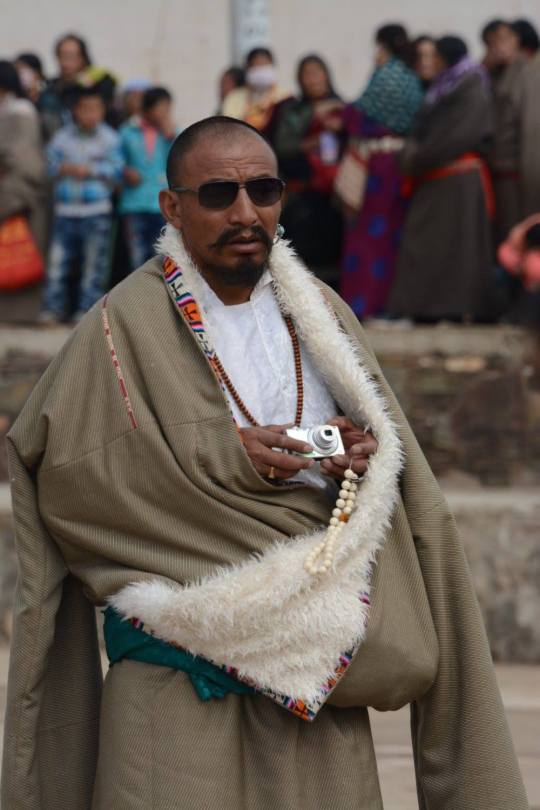
The chuba is a floor-length, left-crossing loose garment that is adjusted at the waist with a wide, usually red cloth belt, and pulled up to different degrees according to sex, rank or region. It is an extraordinarily adaptable garment worn by town dwellers, farmers, nomads, men and women alike, and is equally wearable on horse or motorcycle.
Chubas are pocket-less and held together with a waistband, with room in the front that serves as an “inside pocket” or inner pouch to store necessities such as food items, money belts, amulets, personal things, and even an infant in the bosom.
The chuba can be worn in different lengths, and the shorter the chuba, the more voluminous the pouch resulting from the overhanging material used to hold small items. Women wear their chuba ankle length, while men mostly pull them up the mid-calf or above the knee. Tibetan weather is fickle and temperatures can rise and fall within minutes.
Half-chupas: Just the skirt
Full chupas: Can be worn with a shirt
One-piece chupas: A one-piece dress
Town women: Wear their chubas floor length with pumps or high heel boots
Farmers and nomads: Double them over trousers
Ex: Rewancha, Yua, and Bosch all wore a form of chuba as their gown. The Chuba had 2 sleeves, but the locals usually only wear one sleeve and leave the other hanging loose. This is a way of adjusting the body temperature. When it gets hot, they take off one sleeve to cool down a bit. But if the temperature keeps rising they remove another sleeve too. We can actually see in Bosch's picture that the other sleeve is tucked in the back.
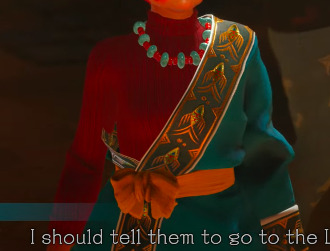


They often have soft fur, pulu, or colorful cloth on the collar, front, cuff, and lower hem of the gown.
5 types of robes could be made out of, Pulu woven fabrics, lambskin robes, sheepskin robes, woolen robes, and light robes.
Woolen robes are made with inner layers of sheep fur, so they are light and warm, making them popular in warmer, agricultural areas like Nayshall.
Pulu, the traditional Tibetan wool fabric, is made by fluffing and combing the wool into a thread by fingers, then weaving it with a wooden shuttle loom. Pulu robes are a favorite in pastoral areas as well as farmland.
Lambskin is ranked by degree, according to the length of lamb hair, curliness, and quality of the skin. 40+ lambskin is necessary to make a medium-class lambskin robe.
Shirts


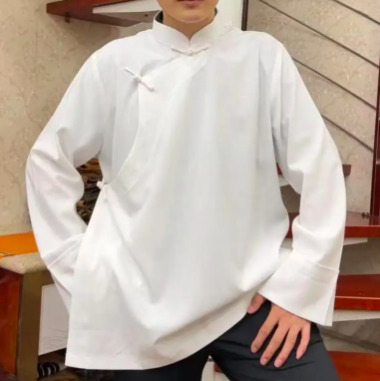
pants

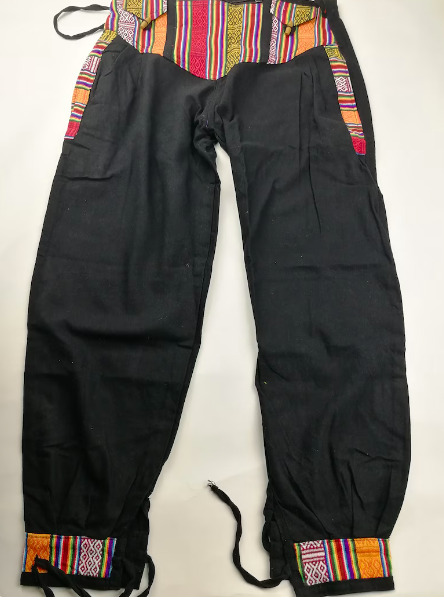

Modern and traditional
A growing trend among young Tibetans is blending traditional and modern casual clothing. Young Tibetans often try to find a balance between modern styles and their cultural heritage. It is not uncommon to see some Western-style clothing like jeans and t-shirts
The classic chuba robe is still everywhere, but Tibetan youth will make stylish adaptations. The cut of the fabric or the embroidered designs will be changed to something more contemporary. These changes show the desire to keep old traditions alive while making innovations to express personal style.
Ex. Same with the people in Nayshall they blend traditional and modern together. Shopkeeper Tsanpa wears jeans with his gho (Bhutan) tucked in. Yua wears modern shoes that resemble Tibetan boots, and Kina wears a beanie on top of her head.



note that Kina may also be wearing a Kora Yushu hat.
The Kora Yushu hat is made from a blend of yak and merino wool, and its fabric originates from Tibet and China. Kora sources the wool directly from Tibetan communities to ensure its quality and origin. The hat is lightweight, warm, and thin enough to fit beneath a hood or helmet, making it suitable for winter and mountain use.

Hairbeads
Tibetan hair jewelry, including braids and hair beads, is used to mark life milestones like birth, marriage, adulthood, and death. The jewelry often reflects the colors of nature.
Tibetan hair beads can be used by both men and women. In Tibet, long hair was recommended for both men and women, except for monks and nuns. Tibetan braids can signal a woman's marital status, social rank, and tribal affiliation. Tibetan men wear hair beads but there is no male equivalent.

Headdress
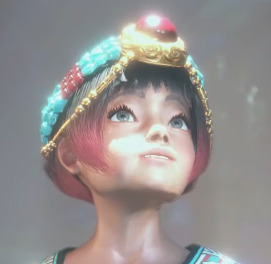

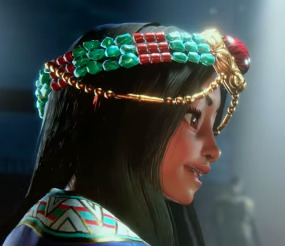
Tibetan headdresses vary by region, age, and marital status. For example, unmarried girls wear a single braid with a red hair string, called Xia Jiu in Tibetan.
Tibetan women wear headdresses on special occasions, such as festivals and their comings-of-age. Headdresses can be colorful and made of coral, turquoise, or other materials. For example, a "Bazhu" is a deluxe headdress made of coral or turquoise with gold or silver earrings. Tibetan women also wear silver bracelets on their left hand and white conch bracelets on their right.


Jewelry


Tibetans traditionally wear jewelry, which is often made from gold, silver, and precious stones. The most common gems used are turquoise, coral, and pearls, which are used in necklaces, earrings, hair ornaments, and to decorate ritual objects. Tibetan jewelry can also be made from cow bone, amber, shell, and agate.
Tibetans wear a variety of jewelry, including ornaments made of gold and silver, as well as jewelry made of amber, agate, jadeite, pearl, and ivory. Tibetan jewelry traditionally features materials from across South Asia, East Asia, and the Middle East, and the symbols on Tibetan jewelry are usually from Himalayan Buddhism. Tibetans like to wear many ornaments and jewelry, such as Buddha beads, hair bands, hair accessories, belts, prayer beads, and necklaces.
Jewelry is a symbol of status and wealth in Tibetan culture, and each design has a specific meaning. For example, ornaments with symbols of animals, flowers, and stones are often given to commemorate special occasions. Some also believe that wearing gold enhances spiritual power over evil spirits. Offering jewelry to holy statues is thought to generate positive virtue for the donor.
This article also goes into the types of ornaments they use in their jewelry
Jewelry can also serve as a talisman, with different amulets protecting against disease and harm. For example, coral and turquoise are said to ward off evil spirits and illness.
Many Tibetan jewelry pieces are passed down from generation to generation. For example, some Tibetan-style pendants are used in Buddhism as ritual instruments to subdue demons, which are believed to dispel sins and bring people power, intelligence, and courage. Many of these pendants also have Sanskrit inscriptions of a religious symbolic nature.
Braids
Braids are also a symbol of strength, wisdom, and identity for some indigenous men and boys. They can also represent a connection to the earth, ancestors, and the creator. For example, in Native American tradition, hair is a signifier of spiritual practice, and braiding demonstrates strength in unity
boots
sumba shoes

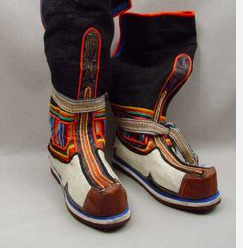

Tibetans typically wear boots, which are more cultural representations than practical clothing. However, due to the prevalence of mass-produced shoes, traditional Tibetan boots are no longer the daily footwear for ordinary Tibetans. Instead, they are now usually part of ceremonial attire.
Tibetan boots are a significant part of the Tibetan way of life. They are more cultural than practical, and are worn to represent different regions and environments. For example, boots with a pointed toe are suitable for different types of terrain, and can be worn with a garter in cold weather. Boots from different regions of Tibet have different styles and qualities. For example, boots from Chamdo and northern Tibet are simple, while boots from Shannan and Xigaze are more delicate.
Tibetan boots are commonly made from cowhide, pigskin, corduroy, and pulu, a traditional woolen fabric. Other materials used include cloth, canvas, velvet, leather, and felt. The original boots were made from yak hide, and the soles were embroidered with patterns like dragons and snakes, and the shoes were decorated with red and green woolen cloth.
Tibetan boots come in two general types: short leg and long leg. Most Tibetan boots are lined or padded, though some may be unlined. The heads of corduroy boots are made of cowhide, and many kinds of pulu boots have cowhide soles.

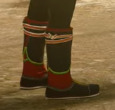

17 notes
·
View notes
Text
Tibetan Uprising Day 2024 and a Half-Forgotten Human Rights Disaster
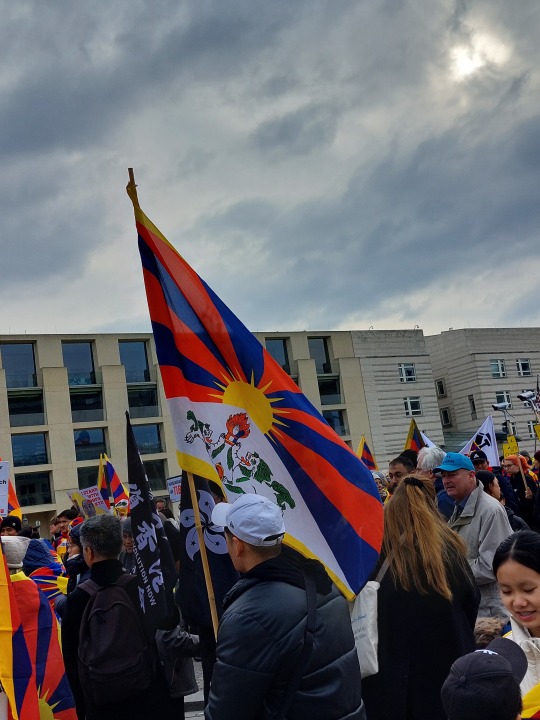
Protesters on Tibetan Uprising Day at Pariser Platz. Berlin, March 10, 2024. Photograph by me (Edith Haimberger). All rights reserved.
"Tibetans inside Tibet: We are with you!"
— sign at Berlin protest on March 10, 2024
The red, yellow and blue colours of Tibet's flag flew across the Pariser Platz square behind Brandenburg Gate on Sunday as some 80 protesters gathered for Tibetan Uprising Day.
Reeducation camps for Uyghur Muslims in China, more rarely developments in Hong Kong, and controversies around the Dalai Lama who is the spiritual leader of Tibetan Buddhists, may dominate international news headlines.
But the plight of inhabitants in the Tibetan region that the protestors portrayed in signs, speeches, and information panels yesterday is no longer common knowledge.
A youngish man in jeans and a puffer jacket, who was walking across the square on Sunday, asked the police officer beside him who had mentioned Tibet, "Was ist das?" ('What is it?') The police officer, at least, knew the answer.
Miniature History In 1950 the Chinese People's Liberation Army invaded the remote region bordering Nepal. Ever since then, the autonomy or even the independence of Tibet has been hotly disputed, as well as the measures through which the ruling Chinese Communist Party governs the country. Tibetan Uprising Day marks the anniversary of a revolt in 1959.
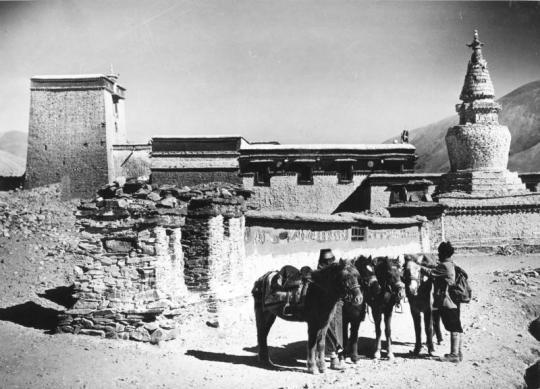
Image: "Tibetexpedition, Kloster in Samada." (Tibet Expedition, Convent [or Monastery] in Samada.) Photo taken by Ernst Krause in 1938. Uploaded to Wikimedia Commons by the German Federal Archives.
'Many of us standing here today,' a speaker wearing traditional embroidered clothing told the crowd in Berlin, 'have never been in Tibet.'
Instead the protesters on Sunday were often exiles, many second-generation.
Their relatives in Tibet face systematic repression.
"Menschenrechte für Tibet" "Freiheit für Tibet"
— 'Human rights for Tibet' and 'Freedom for Tibet.' Signs at the Berlin protest on March 10, 2024.
The Berlin speakers accused the Chinese Communist Party (CCP) of cultural genocide. Children as young as 5 years old are sent to residential boarding schools where they are educated as Chinese, while Tibetan language and culture are forbidden.
Monasteries and convents that were destroyed in the mid-20th century and only partly rebuilt in the 1980s remain vulnerable.
The Chinese government has been building massive hydroelectric dams in Tibet. Permission from Tibetans is not asked, a reporter from Tibet.tv said at the protest in Berlin. Instead, entire villages and monasteries, dating back even to the times where Europe was in the Middle Ages, are destroyed.
Local Tibetans who protest mega-dam projects are arrested and, at times, beaten.
A-Nya Sengdra, a nomad in Qinghai province, is in the middle of a 7-year prison sentence on charges like 'provoking trouble.' In a 2020 press release from the UN's Office of the High Commissioner for Human Rights, experts say that he had been active for example against "illegal hunting and poaching of endangered animals."
As his prison sentence continues, friends are worried for his health.
Outside Tibet, in his Indian exile of Dharamshala, the Dalai Lama has also spoken enigmatically about his successor as spiritual leader. He is 88 years old. The reincarnation of the Dalai Lama has a spiritual dimension for Tibetan Buddhists, but the Chinese Communist Party — a secular body —wants the next Dalai Lama to be approved by them first.
But, also explaining why Tibet is seldom in news headlines, it is difficult to obtain information from within the region. Writing for the Human Rights Watch website in 2022, an expert spoke of
draconian controls on the flow of information between Tibet and the outside world *
The Heyday of International Awareness of Tibet In the 1980s and 90s and early 2000s, Tibet was a cause célèbre. Actress Sharon Stone and actor Richard Gere, who are Tibetan Buddhist, spoke out in favour of its independence. The Tibet-inspired American fantasy film The Golden Child (1986) earned $149.4 million at the box office. In 1997, two films followed: Kundun, directed by Martin Scorsese, and Seven Years in Tibet . When this reporter arrived in Germany in 2006, a string of Tibetan prayer flags crossed above a neighbourhood street. Tourists were drawn to Tibet — this has not changed: it is estimated that 15 million of them visited in 2015. But Tibet was not just famous in cultural spheres. In 1989, the Dalai Lama won the Nobel Prize for Peace.
*
Tenuous links exist between Tibetans in countries like Germany and Tibetans in the Tibetan Autonomous Region. But the CCP's surveillance extends beyond international borders. Telephone calls may be monitored, participation in protests by Tibetans in exile become a problem for relatives.

Young women at the Tibetan protest in Berlin, Germany, speak out against the Chinese Communist Party's gathering of DNA as part of a surveillance programme. Photograph taken by me (Edith Haimberger), on Sunday, March 10, 2024. All rights reserved.
Surveillance within Tibet is so severe that human rights organizations and activists reported in 2022 that the CCP are gathering DNA on a large scale — of hundreds of thousands of people, including schoolchildren — to track dissidents.
*
The Tibet Initiative Deutschland and the Gesellschaft für bedrohte Völker, two non-governmental groups, co-organized the Berlin protest on March 10.
The Gesellschaft noted on their social media that German Chancellor Olaf Scholz will travel to China in April.
In Tibetan communities in the country and abroad there are conflicting opinions on how to resist the Chinese Communist Party. Peacefully, through classic forms of protest? Through self-immolation?
"We know through painful experience that freedom is never voluntarily given by the oppressor; it must be demanded by the oppressed."
— Quoted during the March 10 protest. From Martin Luther King, Jr.: Letter from a Birmingham Jail (1963) [Wikiquote]
A speaker from the Tibet Initiative Deutschland described his group's campaign to persuade municipalities across Germany to raise the flag of Tibet over their town halls for Tibetan Uprising Day in solidarity. Over 400, he said, had agreed.
Efforts at the federal level by the German chancellor, foreign minister, and others on behalf of minorities' civil and political rights, however, are apparently often undermined by German corporations.
A representative of the Gesellschaft für bedrohte Völker told the crowd in front of the German Foreign Ministry yesterday:
Corporations doing business within China — the German foreign ministry reports in its China-Strategie publication that there are 5,000 of these — lobby for silence, fearing financial losses.
5 notes
·
View notes
Text
Rhythms of Mithila: The Spirit of Madhubani Art
Madhubani art, also known as Mithila painting, is one of the most celebrated forms of traditional Indian folk art. Originating from the Mithila region, which spans parts of Bihar, India, and Nepal, this art form is renowned for its unique style, intricate detailing, and vibrant use of colors. The name "Madhubani" translates to "forest of honey," which reflects the rich cultural and natural environment that inspires these artworks.
Historical Background
The origins of Madhubani art are deeply rooted in Indian mythology and history. It is believed that this art form dates to the time of the Ramayana, an ancient Indian epic. According to legend, King Janak of Mithila commissioned artists to create paintings on his daughter Sita's wedding to Lord Rama. This royal patronage helped establish the tradition of creating auspicious images to mark special occasions, a practice that continues to this day.
Traditionally, Madhubani paintings were made on the walls of homes during festivals, rituals, and important life events such as weddings and births. These paintings served as an expression of devotion, a means of preserving cultural narratives, and a way of bringing good fortune. Over time, the medium expanded from walls to cloth, paper, and canvas, making the art more accessible and portable.
Techniques and Materials*
Tools and Materials:
Madhubani art is characterized by its use of simple tools and natural materials. Artists traditionally use fingers, twigs, brushes, matchsticks, and even nib pens to create intricate designs. The natural pigments and dyes used in these paintings are derived from a variety of sources. For instance, yellow is obtained from turmeric, blue from indigo, red from the Kusum flower or red sandalwood, green from leaves, and black from burnt rice. Cow dung and mud are often mixed to prepare the base of the wall paintings, providing a natural texture and background.
Techniques:
The technique involves outlining the designs with bold lines using a mixture of cow dung and mud or black from burnt rice husk. This is followed by filling the spaces with bright, vibrant colors. The paintings often feature a double line border filled with intricate patterns and motifs such as flowers, animals, and geometric shapes. The figures in the paintings are typically depicted in profile, and the faces are drawn with elongated eyes, which is a distinctive feature of this art form.
Madhubani art does not leave any empty space in the composition; every inch is filled with intricate patterns and symbols. This technique of filling the entire space is known as Kachani or Bharni.The detailing and the use of geometric patterns are not just aesthetic choices but also hold cultural and symbolic meanings, reflecting the artists' connection to their cultural heritage.
Styles of Madhubani Art
Madhubani art is not monolithic; it encompasses several distinct styles, each with its own characteristics and thematic focus. The primary styles include:
Kachani Style:
Kachani style of Madhubani painting is style which comes from the Kayastha community by its intricate line work and fine detailing. Kachani is primarily monochromatic, using a minimal palette with black and white being predominant. This style focuses more on the detailing of the figures and the use of fine lines to create patterns. It often represents scenes from nature and daily life.

2. Bharni Style:
The Bharni style is known for its bold, vibrant use of colors and the depiction of mythological figures, nature, and animals. Traditionally practiced by Brahmin women, this style often portrays Hindu deities like Krishna, Rama, Durga, and Saraswati. The emphasis is on filling the central subject with solid colors, while the background may be decorated with intricate patterns.

3. Tantrik Style:
The Tantrik style is heavily influenced by tantric symbolism and motifs. It involves the depiction of tantric deities and yantras (geometric diagrams used in worship). This style is spiritual and esoteric, often featuring complex and abstract patterns that are rich in symbolic meaning.

4. Godna Style:
The Godna style is inspired by traditional tattoo patterns. This style incorporates symbols and motifs that are culturally significant and often linked to social beliefs and practices. It is characterized using repetitive patterns and motifs such as flowers, animals, and geometric shapes.

5. Kohbar Style:
The Kohbar style is specifically associated with marriage rituals. These paintings are created on the walls of the nuptial chamber and depict themes related to love, fertility, and prosperity. The central motif often includes a lotus flower, symbolic of fertility, surrounded by fish, birds, and other auspicious symbols.

Themes and Motifs
Madhubani paintings are rich in symbolism and cultural narratives. The themes can vary widely, but they often revolve around mythology, nature, and everyday life. Common motifs include:
- Mythological Figures: Depictions of Hindu gods and goddesses, such as Lord Krishna with Radha, Lord Rama with Sita, and various forms of the goddess Durga, are prevalent. These figures are often portrayed in vibrant, dynamic compositions that narrate stories from Indian epics and scriptures.
- Nature and Animals: The natural world is a significant inspiration in Madhubani art. Trees, flowers, birds, and animals like elephants, peacocks, and fish are commonly featured. These elements are not just enhancing but are also infused with cultural and spiritual symbolism. For example, the fish symbolizes fertility and prosperity, while the peacock represents beauty and love.
- Social and Cultural Practices: Madhubani art also captures scenes from daily life, such as agricultural activities, festivals, and social gatherings. These depictions provide a glimpse into the cultural practices and traditions of the Mithila region.
- Abstract and Symbolic Patterns: Geometric patterns, tantric symbols, and abstract designs are also a part of Madhubani art. These elements often carry deeper meanings and are used to convey philosophical and spiritual concepts.
Cultural Significance
Madhubani art is not just an artistic expression; it is a vital part of the cultural and social fabric of the Mithila region. The art form is deeply intertwined with the community's rituals, festivals, and social practices. For instance, the Kohbar paintings are an integral part of wedding ceremonies, symbolizing blessings for a happy and prosperous married life. Similarly, paintings of deities are created during festivals to invoke divine blessings.
The art form also serves as a medium for preserving and transmitting cultural knowledge and values. Through the depictions of mythological stories and traditional practices, Madhubani art helps keep the cultural heritage of the Mithila region alive.
Modern Adaptations and Global Recognition
In recent years, Madhubani art has acquired global appreciation and gratitude. The art form has transcended its traditional boundaries and found new expressions in contemporary contexts. Artists are now creating Madhubani-inspired designs on textiles, pottery, home decor items, and even fashion accessories. The use of modern materials and techniques has also expanded the scope of this art form.
The Indian government and various non-governmental organizations have played a crucial role in promoting Madhubani art. Initiatives such as exhibitions, workshops, and cultural exchange programs have helped bring Madhubani artists into the limelight. Additionally, the art form has found a place in international art markets, with collectors and art enthusiasts from around the world appreciating its unique aesthetic and cultural depth.
Economic and Social Impact
The commercialization of Madhubani art has provided a significant source of income for the artists, many of whom are women from rural backgrounds. This economic empowerment has had a positive impact on the community, enabling better access to education, healthcare, and other resources. Moreover, the recognition of Madhubani art on global platforms has instilled a sense of pride and cultural identity among the artists and their communities.
Challenges and Preservation Efforts
Despite its popularity, Madhubani art faces challenges, including the risk of losing traditional techniques and motifs to modernization. The younger generation's inclination towards urban life and modern professions has led to a decline in the number of traditional artists. Additionally, the influx of synthetic materials and commercialization has sometimes compromised the authenticity and quality of the artwork.
To address these challenges, several organizations and art enthusiasts are working towards preserving the traditional aspects of Madhubani art. Efforts include documentation of traditional techniques, promotion of natural dyes, and providing training and support to upcoming artists. Educational programs and workshops are also conducted to create awareness and appreciation for this art form among the younger generation.
Conclusion
Madhubani art is a timeless expression of cultural heritage, artistic excellence, and social narratives. It is a testament to the rich cultural tapestry of the Mithila region and an invaluable part of India's artistic legacy. As this art form continues to evolve and adapt to modern times, it retains its essence and continues to inspire and captivate audiences worldwide. The ongoing efforts to preserve and promote Madhubani art ensure that this beautiful tradition will continue to thrive and enrich the cultural landscape for generations to come.
2 notes
·
View notes
Text

Sherpa bride and groom, Nepal, by Studio Kusal
#sherpa#nepal#asia#south asia#folk clothing#traditional clothing#traditional fashion#cultural clothing
219 notes
·
View notes
Text
Unknown Top Items That are Exported From Nepal
Do you know what items Nepal exports to other countries? Along with major exports like carpets and clothing, many unique and unknown Nepali products are exported worldwide. People from all around the globe have fancy items from Nepal. They are trusted with the most authentic items. Want to know what is the interesting Handicraft Export from Nepal? Let’s begin the journey through Nepal! Read on to find out!
Handmade Paper
Nepal makes beautiful handmade paper from the bark of a tree called Lokta. This paper is used for journals, cards, bags, boxes, photo albums and more. The Lokta paper is famous for its durability and texture. Nepal exports handmade paper products to many countries.
Beads and Jewelry
Delicate jewellery made from beads, silver and semiprecious stones is a key export item. Glass seed beads are produced and creatively used on necklaces, bracelets, earrings and more. The beadwork and jewellery reflect excellent Nepali craft skills.
Essential Oils
Nepal's aromatic herbs, flowers and plants extract essential oils like mentha, wintergreen, eucalyptus and chamomile oils. These pure and organic essential oils are exported for aromatherapy, personal care and food industries worldwide.
Pashmina Products
Luxurious pashmina shawls, scarves and wraps made from Himalayan goat wool are globally renowned exports of Nepal. Along with shawls, pashmina is also used for stoles, mufflers, fabric rolls and other woollen goods exported worldwide. If you want handicraft export from Nepal never miss out on these!
Incense Sticks
High-quality incense sticks scented with natural Himalayan herbs are hand-rolled and exported from Nepal. These incense sticks are used for meditation and prayer rituals. They provide income to Tibetan refugee communities in Nepal.
Hand Knotted Carpets
Beautifully hand-knotted wool and silk carpets are made in Nepal using traditional designs and motifs. Nepali carpets are valued globally for their quality craftsmanship. They are exported to many countries for home and office use. If you want a carpet that is perfect and shows quality work, you must get it from Nepal!
Iron Artifacts
Wrought iron tools, artefacts and decor items forged by skilled blacksmiths are exported too. Wall hangings, lamp stands, plant holders, furniture with ironwork and more have a market abroad.
Lokta Paper
The bark of the Lokta bush found in Nepal's mountains is used to make solid, handmade paper having a fibrous texture. This Lokta paper is exported to make lampshades, cards, tea bags, souvenirs and other products.
Conclusion
Along with major exports like clothing and carpets, many unique Nepali handicraft products also have markets worldwide. Metal crafts, jewellery, Lokta paper, pashmina goods, felt items, beads and essential oils are some unknown top exports from Nepal. The exports highlight the diversity and high skills of Nepali craftspeople.
2 notes
·
View notes
Text
Culture Of Nepal
Nepal is a land-located country between India and China. It is well known for the majestic Himalayan mountain ranges and the deep valleys that shape the landscape. Nepalese people are generally patient and calm. Here you can see many different religions and cultures people live together. Most of Nepal's culture is rooted in tradition and religion. Nepalese are proud that their country has never been ruled. The Gurkhas (Nepalese army) continue to be highly admired for their work. The people of Nepal understand the value and beauty of their land.
Customs and Traditions
Nepalese Customs and Traditions differ from one part of Nepal to another. Nepalese people have their own customs and traditions, each with its own merits. Most of them are Hindus and Buddhists. Many of these traditions come from Hinduism, Buddhism, or other traditions. Among them, marriage law is particularly interesting. Traditional marriages require the parents to agree. Cow slaughter is illegal in Nepal. The cow is considered the universal mother, representing motherhood, and worship it. Before entering a temple or a house, you are often asked to remove your shoes, so as not to pollute the clean room with your shoes. Some non-Hindu temples are prohibited. The right hand, which is considered pure, is used to eat, pay, give, and receive.
Festivals
Nepal's diverse culture is reflected in many of its events. Nepalese people celebrate so many festivals but the major festivals of Nepal are Dashain and Tihar. Dashain is one of the most anticipated festivals of the year and Nepalese Hindus celebrate it with great joy for 15 days in the month of Ashvin (September-October). Tihar is another big festival that is celebrated for five days. Apart from decorating the house with diyo, animals like cows, dogs, and crows are also worshiped at this festival.
Nepali Dance and Music
Music and Dance is also an important part of Nepali culture. Nepal is rich in traditional and classical music. According to Hindu mythology, Shiva, who is the god of dance in his Nataraja form, used to perform the Tandava dance in the Himalayas. Different cities have their own dance style that they perform in different festivals, fairs, and family time. Like dancing, Nepali music is also divided by the community: Tamangs, Gurungs, Sherpas, Maithilis, Newars, Kirats, Magars, and Tharus each have their own songs and dancing styles. Musical instruments like Madal, Dhimey, Panchai Baja, and Sarangi are the traditional musical instruments of Nepal.
Architecture of Nepal
Nepalese architecture is characterized by two main styles: the pagoda style with many revolving stalls and the domed stupa style.
The Pashupatinath Temple in Kathmandu, which attracts many tourists, is one of the oldest examples of the pagoda style in the world, built in the first century AD. A Nepalese architect named Araniko was the first to introduce pagoda-style architecture to China. Other examples of this style include Basantpur Palace and Changu Narayan Temple. Boudhanath and Swayambhunath stupas are beautiful examples of stupa architecture. The Shikhara type is another important type of architecture it consists of a high tower in the form of a mountain with carvings in stone or wood. The Krishna Temple in Patan is an example of this type of architecture. In addition to these, the Newa style, derived from the Newar is also can be seen.
Food of Nepal
Nepalese cuisine is heavily influenced by Indian, Tibetan, and Chinese cuisine. Dal, Bhat, and Tarkari is the staple food of all Nepalese regardless of ethnicity. Bhat means rice, dal means lentils, and tarkari means vegetable curry. Apart from this, there are different types of food that are eaten by different tribes and regions. For example, people living in the highlands can replace rice with other grains such as wheat, corn, millet, corn, or barley.
Traditional Clothes
The traditional clothes of Nepal are Daura-Surul and Dhaka Topi for men and Gunyo-Cholo for women. Traditional clothes are different from the caste and culture. People of different cultures wore their own cultural dress at festivals and marriage functions.
Religion
In Nepal, most of the people are Hindus. The census shows that 81.3% of the people follow the Hindu religion, 9% people follow Buddhists, 4.4% Muslims, 3% Kiratis ( the religion of some natives of the Himalayas) tribal), 1.4% Christians, and the remaining 0.9% are Jains, Sikhs, and some people who do not follow any religion. There are places of worship for all religions in the country and all religions celebrate their own festivals. There is great harmony and cooperation between the Hindu and Buddhist communities in Nepal as they share places of worship and celebrate together. Lumbini in Nepal is actually the birthplace of Lord Buddha, so it is a holy place for Hindus and Buddhists.
Language
Nepali is the national language of Nepal, it is actually a multilingual country, with each ethnic group communicating in their own language. As many as 123 languages are spoken in Nepal, the most spoken of which are Nepali, Newari, Maithili, Bhojpuri, Tharu, and Tamang. The Nepali language is written in the Devanagari language and actually evolved from the ancient Sanskrit language.
Handicrafts Arts
Variety of products including metalware, pottery, textiles, wood and stone handicrafts, paper, bone, horn, leather, bamboo, etc. The list seems endless, which means you will never run out of products to buy in Nepal. Although some of these objects, such as metal images of gods and goddesses, religious objects such as bells and vajras, wooden carvings, and silver ornaments, have been made since the beginning of civilization. Among textiles, it is useful to know Pashmina and clothes of yak wool. Nepalese artisans have received respect and admiration for their work from people around the world.
#Nepal culture and traditions#Nepal religion and culture#Unique culture of Nepal#Hindu culture in Nepal
4 notes
·
View notes
Text
Brass Buddha Sitting On Hand Statue | 9 Inches
IndiaProduced.com

Description:-
Width & Depth: 5 x 2
Composition:
Crafted from an alloy of copper and zinc, the serene Brass Buddha Sitting on Hand Statue embodies tranquillity and grace. With meticulous detail, the amalgamation of these metals forms a radiant golden hue, symbolising enlightenment. Its blend signifies harmony, echoing the Buddha's balance and inner peace teachings.
Origin:
The Brass Buddha Sitting on Hand Statue originates from ancient Buddhist traditions in Asia, notably Thailand and Nepal. Crafted with reverence, it symbolises serenity, enlightenment, and the harmonious balance between wisdom and compassion. Its intricate design and serene posture embody a timeless tale of spiritual tranquillity, inviting reverence and contemplation from all who behold its graceful form.
Spiritual Benefits:
A Brass Buddha sitting on a hand statue symbolises serene wisdom, embracing the beauty of mindfulness. Its presence invites tranquillity, guiding one towards inner peace and awakening the soul's harmony. Each glance at this embodiment of enlightenment whispers a gentle reminder to seek balance, find solace, and embrace the sacred journey within.
According to Vastu Principles:
In the art of Vastu, placing a Brass Buddha Sitting on a Hand statue is believed to bring tranquillity and wisdom to your space. Position the figure in the northeast direction for optimal energy flow, symbolising knowledge and spiritual growth. Let the serene presence of Buddha guide positive vibes, creating a harmonious ambience that inspires mindfulness and inner peace in your home or office.
Care & Maintenance:
To preserve the serene glow of your Brass Buddha, gently dust it with a soft cloth to remove debris. Avoid harsh chemicals. A mild solution of soap and water suffices for occasional cleaning. Embrace its tranquillity by displaying it away from direct sunlight to prevent discolouration and maintain its divine radiance.
2 notes
·
View notes
Text
Before I get any questions about it...
I had to take some creative liberties when writing the wedding headcanons with Bosch with a gender-neutral reader.
Queer relationships in Tibet aren't documented enough on the internet. So most of my sources did come from heterosexual marriages.
The act of a woman and a man marrying each other fell into the gender norms of a traditional woman and a traditional man in a relationship.
Same thing with marrying foreigners. There were even fewer articles and websites for Tibetan people marrying outside their race.
I had to alter some aspects of Tibetan customs to fit into the world-building of Nayshall.
Remember Nayshall is an accumulation of Nomadic tribes living in harmony, that's why I used wordings like people and group in my fic. They are all Nayshalli, but there are groups in Nayshall that are from different cultural backgrounds: Tibet, Nepal, Bhutan, and India.
That being said, even the tradition of Pulling on the Groom's ear (mag pa gi rna mchog 'then), is not widely practiced in Tibet. But here are some sources that I pulled this custom from here, here, and a video here (start at 2:30).
This custom was from rural farming areas of Tibet. And the act is started by the bride's family, pitting the woman against the men of the groom's family. They would tease the groom to get more gifts out of him and to an extent would "pull on the groom's ear."
"Some women wait in the doorway so that the groom cannot run away. They do not care how loudly the groom shouts in pain. They are not supposed to scratch the groom’s face or grasp his hair intentionally. The groom is usually allowed to ‘beat’ the girls with the sleeve of his traditional Tibetan robe, in order to try to get rid of them, but he can never get angry."
When I wrote this scene I had to keep in mind that the reader is gender-neutral, so the party that was supposed to represent the reader had a mix of men and women. And Bosch's side of the family representing him were all men.
You the reader, wouldn't have known any of this, that's why I wrote Bosch's family initiating the conflict.
Plus it's a street fighter game, so someone's gotta be fighting somewhere.
As for Traditional Tibetan clothing, Woman do have their hair braided and wear headdresses for the occasion. But I personally don't like adding attributes to my readers so I had to take out this section entirely.
The same thing can be said with jewelry. Although both men and women wear jewelry, the bride wears an abundance of it all over her body.
So that is why I didn't go into much detail about the outfits.
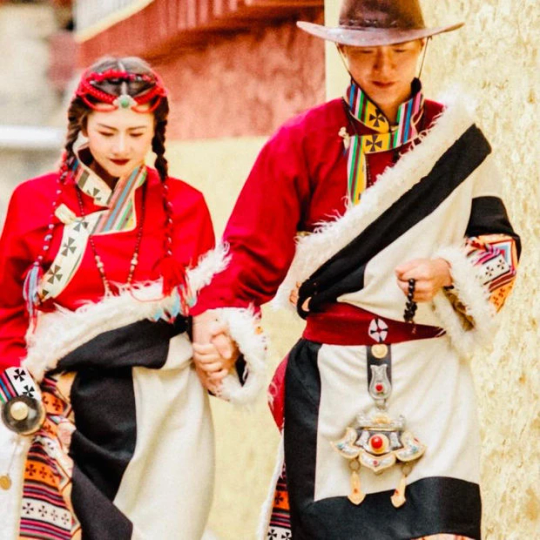


So I opted for You and Bosch to be wearing the same thing to keep the themes gender-neutral.
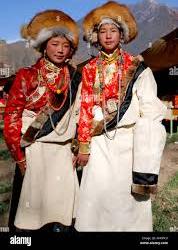


The reason why I split up traditional in the morning and western at night is because most Tibetan weddings that I've seen on YouTube are structured this way.
A proposal is the first step in Tibetan marriage. Traditionally, if a man is interested in a lady, he will inquire about her age, date of birth, and her zodiac attributes (i.e., mouse, ox, tiger, rabbit, dragon, snake, horse, sheep, monkey, chicken, dog, or pig).

In Tibetan Buddhism, a Lama is a spiritual leader or teacher of the Dharma. The word "Lama" is derived from the Sanskrit word guru, which means "venerable one". It can also be used as a term of respect for any respected monk or priest. The word "Lama" is similar to the Tibetan word "bla-ma", which means "boss"
Lamas also participate in Buddhist marriage ceremonies, which include a prayer and the distribution of a religious drink called madyan. The groom and his family visit the bride's home to ask for her hand in marriage, and an astrologer helps determine the wedding date.
Since were on the topic, there was an initial prayer service that was supposed to be done at the Bride's house that I didn't include because you, don't live in Nayshall, so it would've been awkward for me to include it.
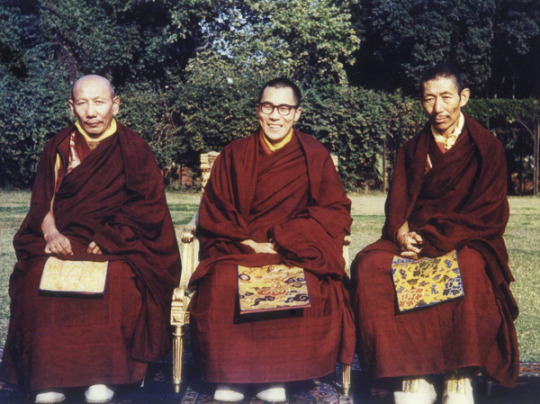
The horse that Bosch picked you up with is a tradition for older Tibet folk. People in Tibet today just use cars that they would decorate with scarves to pick up their brides. But when writing it, I figured Bosch isn't the type to go into modern traditions, that's why I kept it to be a horse.
A well-decorated car with colors suitable to the bride's zodiac attributes is also brought to pick up the bride.



I didn't go over this, but most Tibetan marriages are monogamous with familiar 'nuclear' families. However, polyandry families in Tibet were common in ancient times. Even today, there are polyandry families in some rural areas of Tibet. Polyandry is a form of polygamy whereby a woman has several husbands. In Tibet those husbands are often brothers, which is why it is most commonly called "Fraternal Polyandry".
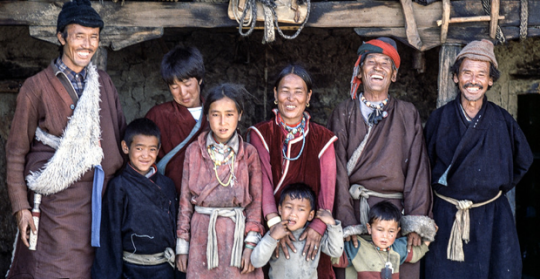
Also to stick out one's tongue is known as a traditional greeting, stemming from a 9th-century myth about an unpopular king with a black tongue. When the king died, Tibetans began revealing their tongues to show they hadn't become his incarnate. Tongue-sucking does not appear to be part of the tradition.

Butter tea holds significant cultural importance beyond its culinary appeal. It is integrated into various ceremonies and rituals, from Tibetan Buddhist practices to traditional celebrations like weddings and Losar, the Tibetan New Year.
Butter tea is made from brick tea, yak butter, yak milk, and salt. It's a vital source of sustenance, especially in high-altitude regions, and provides necessary calories from fat. Tibetans often drink butter tea with tsampa, a staple food, and can consume up to 60 small cups per day.
It symbolizes hospitality, is a sacred offering, and can be a meal in itself. When offering tea to another person, both the giver and receiver use both hands to avoid spilling and as a sign of respect.
In tradition, guests are served constant refills of butter tea to symbolize the host's generosity.
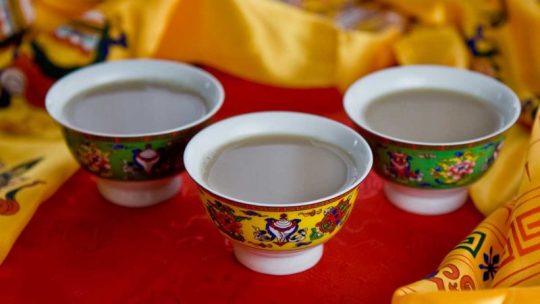
#street fighter x reader#bosch x reader#bosch waraya#bosch waraya x reader#sf x reader#sf6 x reader#street fighter bosch#street fighter#street fighter bosch waraya#street fighter 6 x reader#street fighter 6
17 notes
·
View notes
Text
Hi peps!
Exploring Gender Identity: Debunking the Myth of a Binary System
Gender identity is an issue that has gained tremendous attention in recent years. For a long time, people have viewed gender as a binary system, where individuals are either male or female. However, this view has been challenged by a growing number of people who identify as non-binary, genderqueer, or somewhere in between. The traditional idea of gender may be limiting, as it doesn't account for the variety of gender expressions and identities that exist in the world. In this post, we'll explore the concept of gender identity and debunk the myth of a binary system. We'll delve into the history of gender norms, the difference between sex and gender, and the challenges faced by those who don't fit into the traditional binary system. Our goal is to foster a greater understanding of gender identity and to promote inclusivity and acceptance for all people, regardless of their gender identity.
1. Introduction: Understanding gender as a spectrum
Introduction: Understanding gender as a spectrum
In today's society, traditional notions of gender have long been challenged and redefined. The concept of gender as a binary system, with only male and female as its two fixed categories, is being debunked as we embrace a more inclusive and nuanced understanding of gender identity. This shift in perspective recognizes that gender exists on a spectrum, encompassing a diverse range of identities beyond the limited confines of male and female.
To truly understand this concept, we must acknowledge that gender is not solely determined by biological sex. While sex refers to the physical characteristics that categorize individuals as male or female, gender is a deeply personal and multifaceted aspect of a person's identity. It encompasses one's internal sense of self, their social roles, and their expression of gender through behavior, appearance, and clothing.
By recognizing gender as a spectrum, we open ourselves up to a world of rich and diverse experiences. Individuals may identify as cisgender, aligning their gender identity with the sex assigned at birth. Others may identify as transgender, experiencing a disconnect between their gender identity and the sex assigned at birth. Non-binary individuals may identify as neither exclusively male nor female, embracing a fluid and expansive understanding of gender.
This shift in perspective challenges societal norms and expectations, urging us to question the rigid categories we have been conditioned to accept. It calls for a more inclusive and accepting society, where individuals are free to express their authentic selves without fear of judgment or discrimination.
In this blog series, we will delve deeper into the complexities of gender identity, exploring the experiences and stories of individuals who defy the binary system. We will unpack the social, cultural, and historical factors that have shaped our understanding of gender and discuss the importance of creating safe spaces for individuals to explore and express their true selves.
Join us on this journey of exploration and understanding as we debunk the myth of a binary gender system and embrace the beauty and diversity of the gender spectrum.
2. The history of a binary gender system
The concept of a binary gender system, where individuals are classified strictly as either male or female, has long been ingrained in societies across the world. However, it is important to recognize that this binary understanding of gender is not a natural or inherent truth. Instead, it is a social construct that has evolved over time.
Historically, many cultures recognized and celebrated the existence of multiple genders beyond the binary. For instance, Native American cultures have long acknowledged the presence of Two-Spirit individuals, who embody both masculine and feminine qualities. Similarly, some indigenous cultures in India, Nepal, and Thailand have recognized the Hijra community as a distinct third gender.
The imposition of a binary gender system can be traced back to the rise of colonialism and the spread of Western ideologies. European colonizers brought with them a rigid perspective on gender that sought to erase the diversity and fluidity of gender identities that existed in many indigenous cultures.
In the 19th and 20th centuries, medical and psychological fields further contributed to the establishment of a binary gender system. The emergence of theories such as Sigmund Freud's psychoanalysis and the development of sexology aimed to categorize individuals into two distinct genders based on biological sex.
However, it is crucial to challenge this historical narrative and recognize that gender identity is not solely determined by biological sex. Many individuals do not fit neatly into the categories of male or female and identify as non-binary, genderqueer, or genderfluid.
By understanding the historical context of a binary gender system, we can begin to debunk the myth that it is the only valid way to understand and define gender. Embracing and celebrating the diversity of gender identities is essential for creating a society that is inclusive, affirming, and respectful of all individuals, regardless of where they fall on the gender spectrum.
3. The limitations and flaws of a binary gender system
The concept of a binary gender system, which categorizes individuals strictly as either male or female, has long been ingrained in many societies. However, it is crucial to examine and understand the limitations and flaws of this system in order to promote inclusivity and respect for all gender identities.
One of the primary limitations of the binary gender system is that it fails to recognize the complexity and diversity of human identities. Gender is not solely determined by biological sex, but rather, it is a deeply personal and multifaceted aspect of a person's identity. Many individuals do not fit neatly into the traditional categories of male or female, and forcing them to do so can lead to feelings of exclusion, confusion, and even discrimination.
Moreover, the binary gender system perpetuates harmful stereotypes and expectations. It assigns specific roles, behaviors, and traits to each gender, reinforcing the notion that certain characteristics are inherently masculine or feminine. This not only restricts individual expression but also fosters a culture of conformity, where deviation from prescribed gender norms is seen as abnormal or deviant.
Additionally, the binary gender system overlooks the existence of non-binary, genderqueer, and genderfluid individuals, among others. These individuals may identify outside of the traditional male/female spectrum, and their experiences and identities deserve recognition and validation.
By debunking the myth of a binary gender system, we can work towards creating a more inclusive and accepting society. This involves acknowledging and respecting the diverse range of gender identities, providing spaces and resources for individuals to express themselves authentically, and challenging societal norms and expectations that perpetuate harmful gender stereotypes.
In conclusion, the binary gender system is limited and flawed in its ability to accommodate the complex and diverse nature of human gender identities. Embracing a more inclusive understanding of gender is essential for promoting equality, respect, and understanding for all individuals, regardless of their gender identity.
4. Debunking myths about gender identity
In order to foster a more inclusive society, it is crucial to debunk the myths surrounding gender identity. One of the most prevalent myths is the belief in a binary system, where gender is strictly limited to male and female. This binary understanding fails to acknowledge the vast diversity of gender experiences that exist beyond these traditional categories.
Firstly, it is essential to understand that gender identity is not determined solely by biological sex. While sex is assigned at birth based on physical characteristics, gender identity is deeply personal and is often self-identified. It is a deeply held sense of being male, female, both, neither, or any other gender identity that an individual resonates with.
Furthermore, it is crucial to recognize that gender is not simply a binary spectrum, but rather a multifaceted continuum. Gender identities can encompass a wide range of expressions, including but not limited to transgender, non-binary, genderqueer, and genderfluid. Each individual's experience of their gender identity is unique and valid.
Another myth that needs debunking is the assumption that gender identity is solely determined by one's external appearance or presentation. Gender identity is an intrinsic aspect of a person's sense of self, and it may not align with societal expectations or stereotypes associated with their assigned sex at birth. It is important to respect and affirm each individual's self-identified gender, regardless of outward appearance.
By debunking these myths and challenging the rigidity of a binary understanding of gender, we can create a more inclusive and accepting society. It is crucial to embrace and celebrate the diversity of gender identities, providing support and understanding to those who may be marginalized or misunderstood. Only then can we truly foster a society where individuals can express their authentic selves without fear or discrimination.
5. Understanding the difference between gender identity and biological sex
In order to truly explore and understand gender identity, it is crucial to recognize and differentiate between gender identity and biological sex. The traditional notion of a binary system, where individuals are classified solely as male or female based on their biological characteristics, does not accurately capture the complexity and diversity of human experiences.
Biological sex refers to the physical attributes and reproductive systems typically associated with male or female bodies. It is often determined by external genitalia, chromosomes, and hormones. However, it is important to note that biological sex is not always straightforward or neatly categorized. Intersex individuals, for example, may possess variations in their reproductive or sexual anatomy that do not fit within the typical definitions of male or female.
On the other hand, gender identity refers to an individual's deeply felt sense of their own gender. It is a deeply personal and internal experience that may or may not align with the sex assigned to them at birth. Gender identity exists on a spectrum and encompasses a wide range of identities beyond just male and female. Some individuals may identify as transgender, non-binary, genderqueer, or genderfluid, among other identities.
Understanding the distinction between gender identity and biological sex is crucial for creating a more inclusive and accepting society. It is essential to respect and affirm individuals' gender identities, regardless of their biological sex. By debunking the myth of a binary system, we can foster a more supportive environment for people to express their true selves and live authentically.
6. Exploring non-binary gender identities
In recent years, our understanding of gender identity has evolved beyond the traditional binary system of male and female. Many individuals identify as non-binary, a term that encompasses a diverse range of gender identities that do not fit within the confines of the male/female dichotomy.
Non-binary individuals may identify as genderqueer, genderfluid, agender, bigender, or any other identity that falls outside the binary spectrum. It is important to recognize and respect these identities, as they are just as valid and deserving of acknowledgement as any other.
Exploring non-binary gender identities allows us to challenge and debunk the myth that gender is strictly binary. By acknowledging and understanding the experiences of non-binary individuals, we can foster a more inclusive and accepting society.
One important aspect of exploring non-binary gender identities is recognizing the importance of using proper pronouns. While many people are accustomed to using he/him pronouns for individuals they perceive as male and she/her pronouns for individuals they perceive as female, it is crucial to also be aware of and use gender-neutral pronouns such as they/them.
By using the correct pronouns, we show respect for an individual's chosen gender identity and help create a more inclusive environment. It may take some time and practice to adjust to using gender-neutral pronouns, but the effort is worth it in order to make non-binary individuals feel seen, valued, and affirmed.
In addition to using proper pronouns, it is essential to listen to and learn from non-binary individuals themselves. Every person's experience of gender identity is unique, and by engaging in respectful conversations and actively seeking knowledge, we can broaden our understanding and challenge the limitations of the binary system.
By exploring non-binary gender identities, we not only break free from societal norms and expectations but also contribute to a more accepting and inclusive world. Let us celebrate the diversity of gender identities and work towards a society where everyone can express their true selves without fear of judgment or discrimination.
7. The importance of gender inclusivity and acceptance
In today's society, it is crucial to recognize and embrace the importance of gender inclusivity and acceptance. The traditional binary system, which categorizes individuals strictly as male or female, fails to capture the diverse spectrum of gender identities that exist. By debunking the myth of a binary system, we open the door to a more inclusive and understanding society.
Gender inclusivity means acknowledging and validating individuals who identify as non-binary, genderqueer, genderfluid, or any other gender identity outside of the traditional male-female binary. It is about creating a safe and welcoming space for everyone, regardless of how they identify.
One of the key reasons why gender inclusivity is important is because it promotes equality. By recognizing and respecting individuals' self-identified gender, we are affirming their identity and validating their experiences. This helps to break down harmful stereotypes and prejudices that are often associated with rigid gender norms.
Another important aspect of gender inclusivity is the impact it has on mental health and overall well-being. For many individuals, struggling to fit into societal expectations of gender can lead to feelings of isolation, shame, and even discrimination. By embracing gender inclusivity, we are sending a powerful message of acceptance and support, which can greatly improve the mental health of those who have been marginalized or overlooked.
Moreover, gender inclusivity benefits not only individuals but also the broader community and society as a whole. It fosters a culture of empathy, understanding, and respect, where everyone can thrive and contribute their unique perspectives and talents. Inclusivity strengthens social cohesion and promotes a more just and equitable society for all.
To achieve gender inclusivity and acceptance, it is essential to educate ourselves and challenge our own biases and preconceived notions about gender. We must actively listen to the experiences and voices of individuals who do not conform to the binary system and learn from their stories. By doing so, we can foster a more compassionate and inclusive society that celebrates the rich diversity of gender identities.
In conclusion, gender inclusivity and acceptance are crucial in debunking the myth of a binary system. By embracing and affirming diverse gender identities, we create a more equitable and supportive society for everyone. Let us strive for a world where gender is not a restrictive box but a beautiful spectrum of identities to be celebrated and respected.
8. Challenges faced by individuals who do not fit within the binary system
Individuals who do not fit within the binary gender system often face numerous challenges in their daily lives. The binary system, which categorizes individuals strictly as either male or female, fails to acknowledge the complexity and diversity of gender identities.
One of the major challenges is societal stigmatization and discrimination. Non-binary individuals often experience marginalization and prejudice due to their gender identity. They may face invalidation of their experiences, denial of their identity, and even verbal or physical abuse. This can lead to feelings of isolation, low self-esteem, and mental health issues.
Another challenge is the lack of legal recognition and protection. Many countries still have laws that require individuals to identify as either male or female on official documents such as passports and identification cards. This erases the existence of non-binary people and denies them the right to express their true identity.
Access to healthcare and support services is also a significant challenge for individuals who do not fit within the binary system. Many healthcare providers are not adequately trained to understand and address the unique needs of non-binary individuals. This can lead to inadequate healthcare, misgendering, and a lack of access to necessary medical interventions.
Educational institutions can also pose challenges to non-binary individuals. Many schools and universities have policies and practices that are based on the binary gender system, such as gendered dress codes and segregated facilities. This can create a hostile environment for non-binary students, making it difficult for them to fully participate and succeed academically.
Overall, individuals who do not fit within the binary system face numerous challenges in various aspects of their lives. It is crucial for society to recognize and affirm the existence and rights of non-binary individuals, and work towards creating a more inclusive and accepting environment for everyone, regardless of their gender identity.
9. How society can support and affirm non-binary individuals
Supporting and affirming non-binary individuals is crucial in creating an inclusive and accepting society. Here are some ways that society can provide the necessary support:
1. Education and Awareness: It is essential to educate ourselves and others about non-binary identities. Society should strive to understand the diversity of gender identities beyond the binary system. Educating ourselves about non-binary experiences, pronouns, and preferred language can help foster a more inclusive environment.
2. Respect and Validation: Non-binary individuals often face invalidation and dismissal of their gender identity. Society should actively work towards respecting and validating their identities. This includes using the correct pronouns, addressing individuals by their preferred names, and refraining from making assumptions based on appearance or stereotypes.
3. Legal Protections: Governments and institutions should establish legal protections to safeguard the rights of non-binary individuals. This includes recognizing non-binary genders on official documents, allowing individuals to update their gender markers easily, and ensuring equal protection under the law.
4. Inclusive Policies and Practices: Employers, schools, and healthcare providers should adopt policies and practices that are inclusive of non-binary individuals. This can include implementing gender-neutral restrooms, updating dress codes to be more inclusive, and providing training to employees to ensure respectful and inclusive interactions.
5. Representation and Visibility: Society should work towards increasing the visibility and representation of non-binary individuals in media, literature, and other platforms. This helps to challenge stereotypes and promote greater understanding and acceptance.
6. Supportive Communities: Creating supportive communities is vital for non-binary individuals' well-being. Society should foster safe spaces, support groups, and resources that cater specifically to non-binary individuals. These communities can provide a sense of belonging and support during their journey of self-discovery and self-acceptance.
By implementing these measures, society can take significant steps towards supporting and affirming non-binary individuals, fostering an environment that celebrates diversity and promotes equality for all.
10. Conclusion: Embracing diversity and redefining our understanding of gender
In conclusion, it is crucial for society to embrace diversity and challenge the traditional understanding of a binary gender system. The belief that there are only two distinct genders, male and female, is a myth that fails to acknowledge the complexity and fluidity of gender identity.
By debunking this myth and opening up conversations about gender, we can create a more inclusive and accepting society. It is important to recognize that gender exists on a spectrum, with individuals identifying as non-binary, genderqueer, genderfluid, and various other identities beyond the traditional binary.
By redefining our understanding of gender, we can create spaces where individuals feel safe to express their true selves, free from judgment and discrimination. This means actively educating ourselves and others, challenging harmful stereotypes, and advocating for the rights and dignity of all individuals, regardless of their gender identity.
Embracing diversity in gender identity also means acknowledging and supporting transgender individuals who may experience gender dysphoria and choose to transition. It is important to provide access to healthcare, legal protections, and social support systems that affirm and respect their lived experiences.
In this journey of exploring gender identity, it is essential to listen to the voices and experiences of marginalized communities, such as transgender and non-binary individuals. Their stories and perspectives are crucial in challenging societal norms and creating a more inclusive world.
Ultimately, by embracing diversity and redefining our understanding of gender, we can create a society that celebrates and supports the rich tapestry of human experiences. Let us work towards a future where everyone can live authentically and be respected for who they are, regardless of their gender identity.
We hope this blog post has provided valuable insights into the complex topic of gender identity and debunking the myth of a binary system. Understanding and accepting diverse gender identities is crucial in creating an inclusive and supportive society. By challenging traditional notions and embracing the spectrum of gender, we can foster empathy, respect, and equality. Let us continue to educate ourselves, engage in meaningful conversations, and work towards a world where everyone's gender identity is acknowledged and respected.
------------------------------
Tumblr: A place for all voices, all identities. Join the conversation. #diversity #inclusions #Lqbtq #gender
2 notes
·
View notes
Text
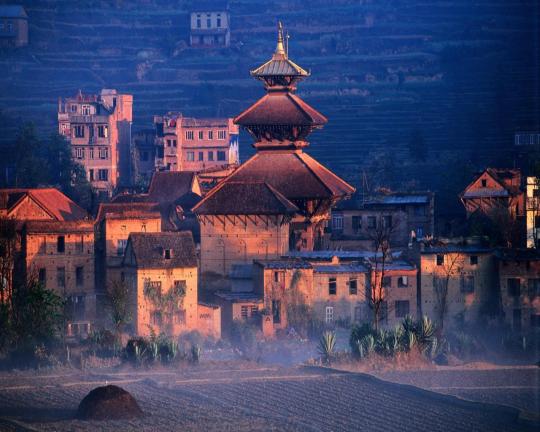
Discover the Mystical Beauty of Nepal: Immerse Yourself in Himalayan Splendor with Our Unforgettable Tour Package! 🌄🌍
NEPAL
Nepal, a country with its own authenticity, culture and its history. The nation has its own gratified posture as it has never been occupied before by any other foreign occupation. It is also one of the oldest Country in South Asia, which solely gets a tag of "The Ceiling of the World", for being home to eight of the ten world's highest mountains, which includes, Mount Everest, Kanchenjunga, Makalu, Cho Oyo, Lhotse etc. A Major portion of Himalayas resides in Nepal.
If you think Nepal is a tiny country famous for mountaineering, you couldn't be more wrong. The capital city, Kathmandu itself, has seven UNESCO World Heritage Cultural Sites within a radius of 15 km. It has been nicknamed as the living cultural museum of the world. Moreover, Nepal has four recognised World Heritage Sites by UNESCO, making it the country with the densest concentration of heritage sites.

Well, if you have a curiosity regarding this mysterious valley and want to know about its interesting facts, then let us answer this for you.
Nepal's capital city, Kathmandu, is a fascinating city with a rich history and culture. The city was founded in the 2nd century CE. The city was originally called 'Kantipur', meaning "City of Glory", and later it was renamed. Kathmandu is located at an elevation of 1,400 m (4,600 ft). Kathmandu is also a great place to shop for traditional Nepali items, such as handmade carpets, jewellery, and clothing. It is a bustling metropolis full of history and culture. The city is home to numerous temples, shrines, and many other important historical and cultural sites.
It is also known as city of temples including "Buddha Stupa", "Pashupatinath Temple", "Shree Muktinath Temple", "Swayambhunath Temple", "Budhanilkantha temple" etc.
Every Temple holds its own fascinating and spiritual stories. Let's start by getting to know "Buddha Stupa", also known as "Boudhanath Stupa".

Boudhanath is a Buddhist religious site, or a stupa, located in Kathmandu, Nepal. It is actually the largest and one of the most sacred Tibetan Buddhist sites outside of the Tibet. It is also one of the biggest stupa, in the world. The stupa contains a diameter of 100 meters and is extended 36 meters more and dominates in the sky. The Stupa comprises alternated squares and circles as well, which is known as a Three-Dimensional Mandala. All the Stupa contain some symbolic significance, namely the Base, Square Harmika, Dome, Spire and Pinnacle. The Boudhanath stupa is structured in nine levels which indicate mythical facts. On the bottom of the stupa, it is whole encircled by 16-sided walls that are irregular in shape and space. This stupa is entirely associated with Bodhisattva Avalokiteshvara, which is available in 108 types of forms and is fully depicted in the stupa's base.
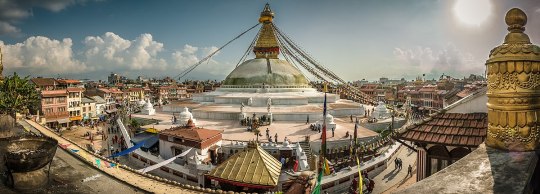
Please reach out to us on the link given below or you can also call us
📞+91- 9775391000
#tourism#holiday#tour packages#tours and travels#travel#vacations#beachparadise#barefootluxury#destination#tourist#summer#hotel#vacation#wanderlust#traveling#solotravel#travel photography#destinations#visit nepal#peak climbing in nepal#mbbs in nepal#hiking in nepal#nepalese#visit#india#bhutan#nepal
4 notes
·
View notes












